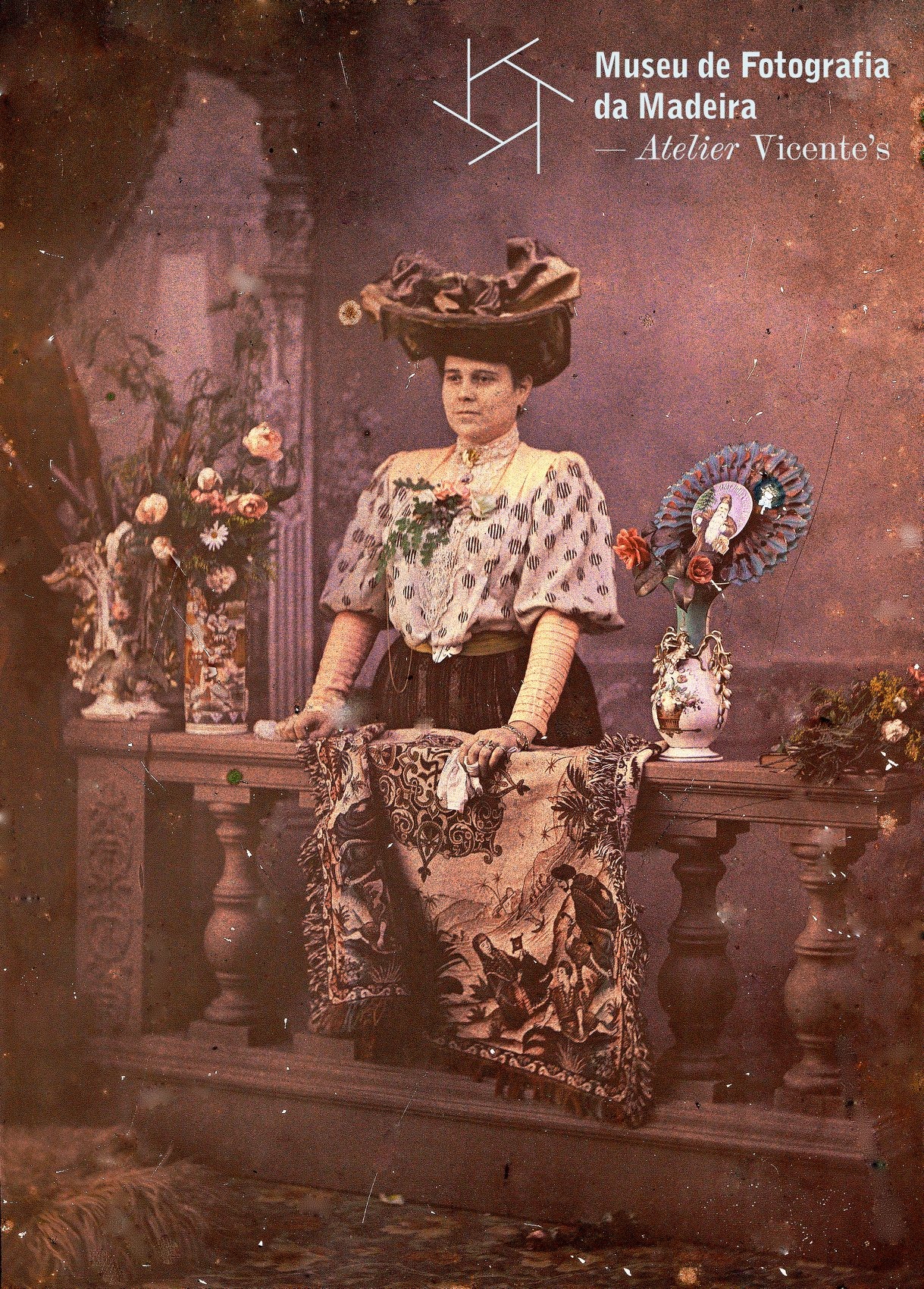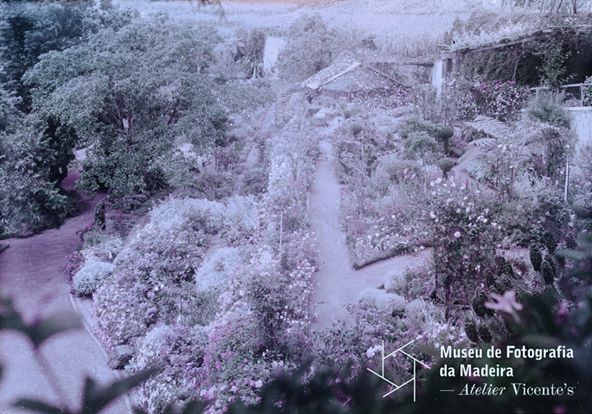Early experiments in colour photography date back to 1868 with the contributions of Louis Ducos du Hauron (1837-1920), although they were not used commercially or industrially. It was only via the process known as Autochrome in 1907 that it became possible to sell glass plates using three-colour printing, allowing the practice to be used around the world. The Lumière brothers successfully condensed years of research and experimentation to produce the first colour photographs in an industrialised manner around 1931. One of the rarest and most significant Autochrome collections, known as ‘Archives of the Planet’, was created by famous banker Albert Khan between 1909 and 1931, forming a collection of 70,000 images taken by different photographers all over the world, including images of Madeira by Auguste Léon. Only half a dozen autochromes produced by Atelier Vicente's exist, several copies of which are on display here. The Paget process was another additive colour synthesis process patented in 1912 by Geofrey S. Whitfield. It was an improvement on the Autochrome method in several ways, allowing the reproduction of positives using plate negatives resulting in quicker sensitisation and lower costs. However, problems lining up the original monochrome image and the colour plates could lead to errors in depicting the colours, such as with some of the images presented here by Photographia Perestrellos. Production using this process came to an end in 1920.
Text by Emília Tavares.
Credits: Madeira Photography Museum - Atelier Vicente's.

Photo 1 | Photographia Vicente | Untitled | Autochrome

Photo 2 | Perestrellos Photographs | Untitled (Gardens of Quinta do Palheiro Ferreiro – Funchal) | Paget process

